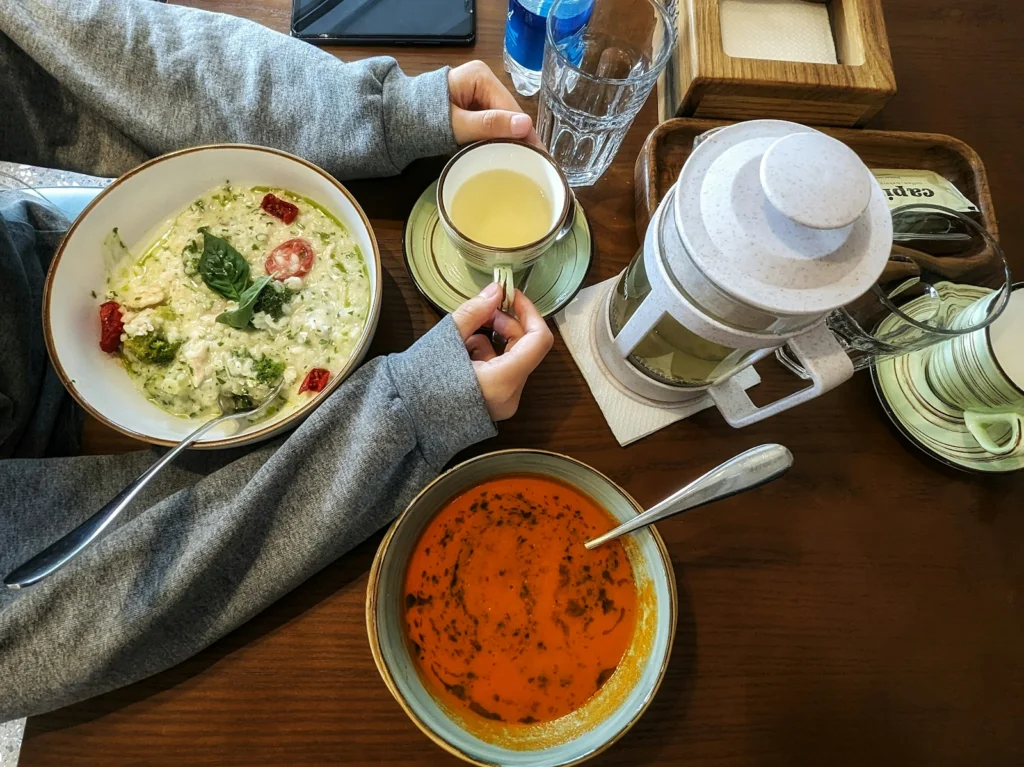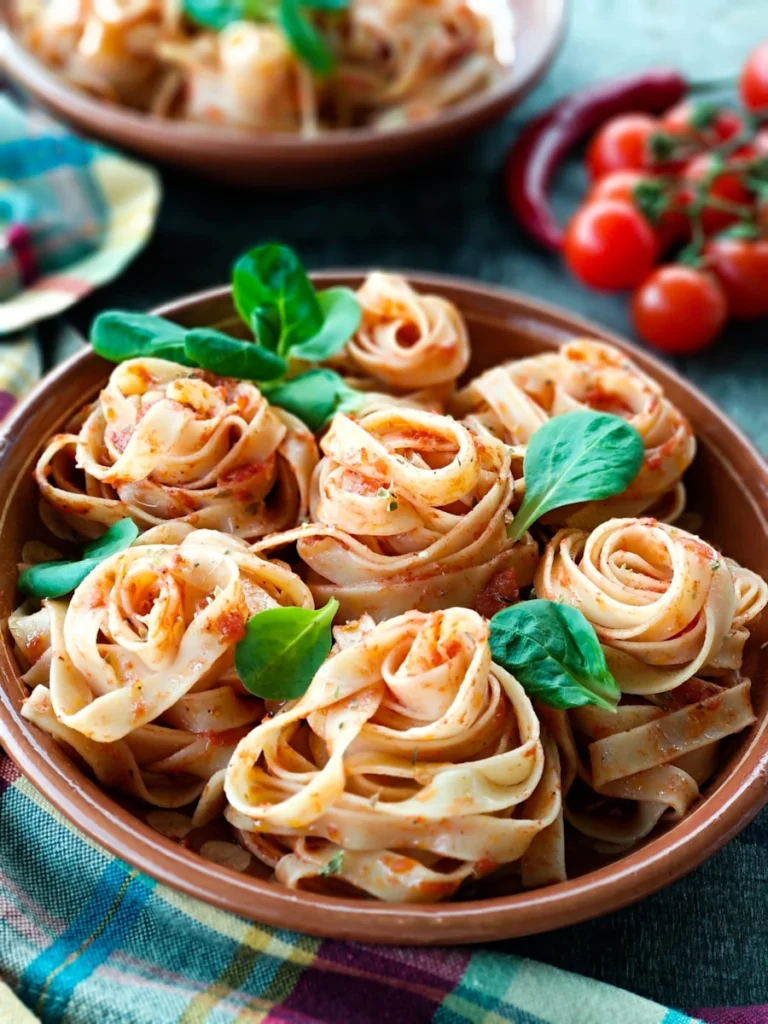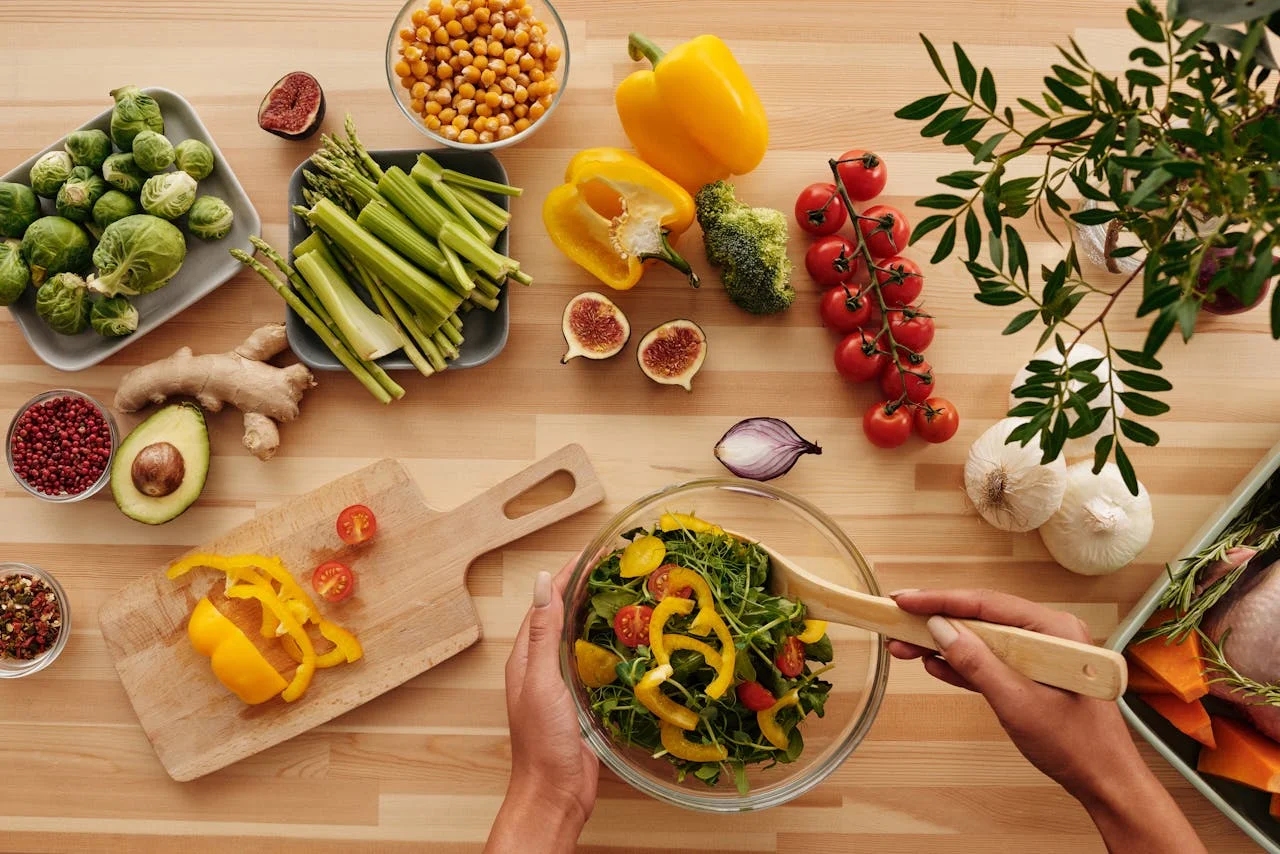
You don’t need a massive grocery budget to create restaurant-quality meals that’ll impress your family and friends. With the right strategies, you can transform basic pantry staples into gourmet dishes while spending just $5 per day on food. It’s all about smart shopping, creative cooking techniques, and knowing which ingredients pack the biggest flavor punch for your dollar. Ready to discover how strategic meal planning and simple substitutions can revolutionize your kitchen without breaking the bank?
Master the Art of Meal Planning With Weekly Batch Preparation
Why do so many families struggle with grocery bills that seem to grow every month? You’re letting chaos control your kitchen instead of taking charge with strategic meal prepping strategies.
Transform your food budget by dedicating two hours every Sunday to batch preparation. You’ll slash weekly cooking time by 75% while cutting grocery costs dramatically. Start by planning seven meals around affordable proteins like chicken thighs at $1.29 per pound or dried beans at $0.89 per bag.
Implement time saving preparation techniques that work: chop vegetables for the entire week, cook grains in bulk, and portion proteins into freezer bags. Store batch-cooked proteins in clear containers for easy meal assembly throughout the week, maximizing both convenience and cost-effectiveness. You’re building a system that puts money back in your pocket! This approach eliminates impulse purchases and food waste, giving you complete control over your kitchen budget.
Shop Your Pantry First Before Hitting the Grocery Store

Your meal planning success depends on knowing what ingredients you already own before making another grocery run. You’ll save serious money by conducting a thorough shop inventory of your kitchen resources first. Take fifteen minutes to evaluate pantry contents, checking expiration dates and organizing items by category. You’re building a foundation for smart spending decisions that keep more cash in your pocket.
Create a running list of what you discover during your inventory sweep. Note quantities, brands, and storage locations for easy reference. This systematic approach prevents duplicate purchases and reduces food waste considerably. You’ll feel empowered knowing exactly what culinary tools you possess before stepping foot in any store. Transform your pantry into a strategic command center that drives your grocery decisions!
Consider converting old t-shirts into cleaning rags to eliminate the need for expensive paper towels while maintaining your kitchen workspace.
Buy Generic Brands and Store Labels for Maximum Savings
How much money could you save by simply switching to generic brands during your next grocery trip? You’ll discover that store brands offer identical quality at 20-40% less cost than name brands. Smart shoppers know this secret weapon transforms their grocery budget instantly.
Store brands deliver identical quality at 20-40% savings – the smart shopper’s secret weapon for instantly transforming grocery budgets.
Maximize your savings with these powerful strategies:
- Compare ingredient lists between generic and name brands
- Stock up during store brand sales and promotions
- Combine store loyalty program benefits with manufacturer coupons
- Focus on pantry staples like rice, pasta, and canned goods
Generic brands undergo the same quality standards as premium options. You’re paying for packaging and marketing, not better ingredients. Pair your generic purchases with coupon clipping strategies for double savings! Your wallet will thank you when you realize you’ve cut grocery costs without sacrificing taste or nutrition. The money you save from choosing generic over premium brands could even fund a small business idea that generates substantial annual income.
Purchase Whole Ingredients Instead of Pre-Processed Foods

What happens when you skip the convenience aisle and head straight for whole ingredients? You’ll slash your grocery bills while gaining complete control over your meals. When you purchase quality ingredients in their natural state, you’re investing in versatility and savings. A whole chicken costs far less per pound than pre-cut pieces, and you can create multiple meals from one bird.
You’ll select affordable whole foods like dried beans instead of canned, fresh vegetables over frozen meal components, and whole grains rather than boxed mixes. This approach transforms your cooking game entirely. You’ll develop knife skills, learn proper seasoning techniques, and discover flavors that processed foods simply can’t deliver.
The time investment pays dividends in both taste and your wallet’s health. Learning just 5 simple recipes can eliminate your reliance on expensive takeout options and give you the confidence to create restaurant-quality meals at home.
Utilize Seasonal Produce for Peak Flavor at Lower Prices
Every season brings nature’s best deals directly to your local grocery store and farmer’s market. You’ll master the art of timing when you source seasonal produce at its peak availability. Spring asparagus costs $2 per pound versus $5 in winter, and summer tomatoes deliver maximum flavor for half the off-season price.
Smart shoppers follow this seasonal strategy:
- Spring: Focus on leafy greens, peas, and early berries
- Summer: Stock up on tomatoes, corn, and stone fruits
- Fall: Embrace squash, apples, and root vegetables
- Winter: Choose citrus fruits and hearty greens
You’ll preserve summer harvests through freezing and canning, extending peak-season savings year-round. Frozen berries maintain nutrition while costing 60% less than fresh winter varieties. Fall superfoods like butternut squash and sweet potatoes offer exceptional nutritional value at budget-friendly prices when purchased in season. This approach transforms your $5 daily budget into gourmet possibilities.
Transform Cheap Cuts of Meat With Slow Cooking Techniques
Tough cuts of meat become tender, flavorful masterpieces when you harness the power of slow cooking methods. You’ll transform $3-per-pound chuck roast into restaurant-quality meals that rival expensive steaks. Your slow cooker becomes your secret weapon for creating incredible dishes from budget-friendly options like pork shoulder, beef brisket, and chicken thighs.
These cooking techniques tenderize tough cuts by breaking down collagen into silky gelatin over 6-8 hours. You’ll extract maximum flavor while your appliance does the work. Start slow cooker recipes in the morning, and you’ll return home to aromatic, fall-apart meat that feeds your family for under $8 total.
Don’t underestimate cheaper cuts – they often contain more flavor than premium options. You’re taking control of your food budget while serving gourmet-quality meals that’ll impress everyone at your table. Pair your slow-cooked proteins with budget-friendly sides like quinoa breakfast bowl adapted for dinner to create complete, nutritious meals that maximize your daily food budget.
Make Your Own Spice Blends From Basic Ingredients
While store-bought spice blends cost $3-5 per small container, you’ll create the same flavors for pennies when you mix your own combinations at home. You’ll control every ingredient and customize blends to match your family’s taste preferences perfectly.
Transform ordinary meals into culinary masterpieces while saving money by creating personalized spice blends that perfectly match your family’s unique taste preferences.
When you explore homemade spice mixes, you’re building a powerful arsenal of flavor enhancers that transform ordinary meals into restaurant-quality dishes.
Here’s how to create signature spice blends that’ll revolutionize your cooking:
- Start with basic spices like garlic powder, onion powder, paprika, and black pepper
- Mix Italian herbs using dried basil, oregano, thyme, and rosemary
- Blend taco seasoning with cumin, chili powder, and cayenne
- Combine curry powder using turmeric, coriander, and ginger
You’ll save $40-60 annually while gaining complete control over your kitchen’s flavor profile! Store your homemade spice blends in airtight containers in a cool, dark place to preserve their freshness and potency for maximum flavor impact.
Cook in Large Batches and Freeze Individual Portions
Batch cooking transforms your kitchen into a meal-prep powerhouse that saves both time and money throughout the week. You’ll prepare meals ahead of time once and eat well for days. Start with one-pot dishes like chili, soup, or casseroles that cost under $8 total but yield six servings.
Cook double or triple recipes on Sunday afternoons. Divide portions into freezer containers immediately after cooling. You’ll utilize freezer space efficiently by stacking flat containers and labeling with dates. Each frozen meal costs roughly $1.25 compared to $8+ for takeout.
Smart batch cooking means you’ll never face expensive last-minute food decisions again. Your freezer becomes a personal restaurant stocked with homemade options. This strategy cuts your weekly grocery bill by 40% while ensuring you always have delicious, ready-to-heat meals waiting. Consider setting up automated savings transfers to move the money you save from batch cooking directly into your savings account, treating these food cost reductions as a pathway to building wealth.
Repurpose Leftovers Into Completely New Dishes
Transform yesterday’s dinner into tonight’s exciting new meal with creative leftover repurposing techniques. You’ll slash your grocery bill while mastering the art of culinary transformation. When you re imagine leftovers, you’re taking control of your budget and harnessing your kitchen creativity.
- Roast chicken becomes hearty chicken salad, soup, or quesadillas
- Cooked rice transforms into fried rice, stuffed peppers, or breakfast bowls
- Leftover vegetables turn into frittatas, pasta sauces, or grain bowls
- Yesterday’s pasta becomes baked casseroles, cold salads, or soup additions
You’re not just saving money—you’re developing powerful meal-planning skills. Each repurposed dish costs pennies compared to starting from scratch, putting you firmly in command of your kitchen budget. Leftover vegetables can be transformed into frittata muffins that provide protein and fiber while creating convenient grab-and-go meals for the week ahead.
Grow Your Own Herbs on a Windowsill Garden

Fresh herbs from the grocery store can cost $3-4 per package, but you’ll spend just pennies when you grow your own windowsill garden. You’re taking control of your kitchen budget while elevating every meal with restaurant-quality flavors.
Start with basil, parsley, and chives – they’re practically foolproof for beginners. Plant seeds in small pots with drainage holes, using basic potting soil. Your herbs need 4-6 hours of direct sunlight daily, so choose your sunniest window. Indoor herb garden maintenance requires minimal effort: water when soil feels dry and pinch off flowers to keep leaves tender.
Within weeks, you’ll harvest fresh herbs that cost mere cents per cutting. You’re building a sustainable system that pays dividends every time you cook, transforming simple ingredients into gourmet experiences without breaking your budget. Growing your own herbs also means you’ll be drinking more water while tending to your plants, and staying properly hydrated supports scalp health by regulating natural oil production and reducing irritation.
Shop at Ethnic Markets for Authentic Ingredients at Lower Prices
While mainstream grocery stores mark up specialty ingredients by 200-400%, ethnic markets offer the same authentic products at prices that’ll make your wallet happy. You’ll discover incredible savings on spices, sauces, and fresh produce that normally cost three times more elsewhere.
Skip the grocery store markup and head to ethnic markets where authentic specialty ingredients cost a fraction of mainstream prices.
These markets help you source produce locally while letting you explore international cuisines without breaking your budget. Here’s what you’ll find at unbeatable prices:
- Fresh herbs and vegetables for $0.50-$1.00 per bundle
- Specialty spices costing $2-3 instead of $8-12
- Authentic sauces and condiments under $3
- Premium rice varieties for half the supermarket price
Don’t feel intimidated if you can’t read every label. Store owners love sharing cooking tips and ingredient suggestions. You’ll expand your culinary horizons while keeping more money in your pocket!
Buy Dried Beans and Grains in Bulk for Protein-Rich Meals
Since dried beans and grains cost pennies per serving compared to their canned counterparts, you’ll slash your grocery bill while boosting your protein intake. You’re taking control of your kitchen budget by making smart purchasing decisions that deliver maximum value.
When you utilize bulk purchasing strategies, you’ll pay $1-2 per pound for dried beans versus $3-4 for canned versions. Store your bulk purchases in airtight containers to maintain freshness for months.
Lentils, chickpeas, and black beans become protein powerhouses when you buy them dried. You’ll maximize protein intake from dried goods by combining beans with rice or quinoa for complete amino acid profiles.
Cook large batches on weekends, then freeze portions for quick weeknight meals that cost under $1 per serving!
Use Vegetable Scraps to Make Homemade Stock
Building on your bulk buying success, you can stretch those grocery dollars even further by transforming kitchen scraps into liquid gold. Instead of tossing those onion peels and carrot tops, you’ll turn them into rich, flavorful stock that costs pennies per cup.
Transform your kitchen scraps into liquid gold—rich, flavorful stock that costs pennies per cup instead of grocery store prices.
Here’s your power strategy for maximum savings:
- Save everything – onion skins, celery leaves, herb stems, mushroom stems
- Preserve vegetable scraps in freezer using gallon bags until you’ve got enough
- Simmer scraps with water for 45 minutes to extract maximum flavor
- Strain and store your homemade stock for up to six months frozen
When you use leftover vegetable scraps this way, you’re not just saving money—you’re taking complete control over your kitchen budget while creating restaurant-quality flavor foundations.
Time Your Shopping Trips for Maximum Discount Opportunities
Your grocery savings can skyrocket when you crack the code of strategic shopping timing. You’ll dominate the discount game by shopping early mornings when stores mark down perishables from the previous day. Hit the meat department first – you’ll find 30-50% off steaks and chicken that expire today.
Master the art of timing grocery circulars by shopping Wednesday through Friday when new sales overlap with clearance items. You’ll double your savings power! Late evening shopping gives you access to marked-down bakery items and produce.
Time meal deals perfectly by planning your menu around weekly sales cycles. Store managers typically discount seasonal items on Sundays and Mondays. You’ll build your reputation as a savvy shopper who never pays full price while creating gourmet meals.
Learn Basic Knife Skills to Prepare Your Own Ingredients
When you master basic knife skills, you’ll slash your grocery budget by preparing whole ingredients instead of buying pre-cut convenience foods. Pre-cut vegetables cost 300% more than whole ones, so investing time in proper technique pays off immediately.
Start with these essential skills to maximize your savings:
- Hold your knife correctly – grip the handle firmly with your dominant hand
- Master the rock-chop motion – keep the tip on the cutting board while rocking
- Learn to sharpen knives efficiently – dull blades waste time and ingredients
- Apply slicing techniques consistently – uniform cuts cook evenly and look professional
You’ll transform expensive convenience items into affordable meal components. A $6 bag of pre-cut onions becomes three whole onions for $2. That’s real kitchen power!
Substitute Expensive Ingredients With Budget-Friendly Alternatives

Once you’ve mastered those knife skills, smart ingredient swaps will stretch your budget even further without sacrificing flavor. You’ll substitute generic brands for name-brand items and save 20-30% instantly. Swap expensive proteins like beef tenderloin for chuck roast, which becomes tender with slow cooking. Replace pine nuts with toasted sunflower seeds in pesto. Use Greek yogurt instead of sour cream or heavy cream in most recipes.
You’ll utilize store loyalty programs to maximize savings on substitution ingredients. These programs often offer digital coupons for generic alternatives. Transform day-old bread into breadcrumbs rather than buying pre-made versions. Substitute vanilla extract with vanilla powder for baking – it’s cheaper per use. Replace fresh herbs with dried ones using a 3:1 ratio. These swaps maintain quality while keeping your daily food budget under $5.
Make Your Own Bread and Pasta From Scratch
Why spend $3-5 per loaf on artisan bread when you can make it for under $0.50? You’ll control every ingredient while saving serious money. Making bread isn’t difficult – it just requires patience and practice.
Skip expensive artisan loaves and make homemade bread for pennies while controlling every ingredient that goes into your family’s food.
When you make dough from scratch, you’re investing in both quality and savings. Fresh pasta costs pennies compared to store-bought versions that run $2-4 per package.
Master these basics first:
- Start with simple white bread before advancing to complex recipes
- Experiment with whole grain flours once you’re comfortable with techniques
- Buy flour in bulk to maximize your savings potential
- Invest in a kitchen scale for consistent, professional results
You’ll discover homemade versions taste better and contain no preservatives or unnecessary additives.
Preserve Seasonal Abundance Through Canning and Pickling
Summer’s peak harvest brings an overwhelming bounty that you can transform into year-round savings through canning and pickling. You’ll capture nature’s abundance when prices are lowest, typically saving 60-70% compared to store-bought preserved foods.
Start with simple water-bath canning for high-acid foods like tomatoes, peaches, and berries. You’ll preserve excess garden produce without expensive equipment – just basic canning jars and a large pot.
Pickling transforms surplus cucumbers, peppers, and onions into tangy treasures that last months.
Don’t overlook fermentation! You can ferment seasonal vegetables like cabbage into sauerkraut or kimchi using nothing but salt and time. These probiotic powerhouses cost pennies to make yet sell for $8-12 per jar.
Master these preservation techniques, and you’ll eat like royalty year-round while spending like a pauper.
Create Restaurant-Style Sauces From Simple Pantry Staples
Beyond preserving fresh ingredients, you can elevate your cooking game by crafting gourmet sauces from ingredients already sitting in your pantry. Versatile homemade sauces transform boring meals into restaurant-quality dishes without breaking your budget.
You’ll master four essential sauce bases using basic staples:
- Garlic aioli – mayo, minced garlic, lemon juice, salt
- Honey mustard – Dijon mustard, honey, apple cider vinegar
- Herb oil – olive oil, dried herbs, red pepper flakes
- Balsamic glaze – balsamic vinegar, brown sugar, butter
These innovative pantry sauce recipes cost under $1 each and rival expensive store-bought versions. You’re creating culinary magic that impresses guests while staying within your daily food budget. Mix, match, and experiment with what you have!
Utilize Every Part of Your Ingredients to Minimize Waste
Something magical happens when you start viewing food scraps as hidden treasures rather than trash destined for the garbage bin. You’ll slash your grocery budget while creating incredible flavors that rival expensive restaurants.
Those onion peels and carrot tops aren’t waste—they’re free ingredients waiting to transform your cooking. Reuse vegetable scraps by turning them into rich, golden stock that costs pennies per cup. Herb stems pack intense flavor for marinades and sauces. Broccoli stalks become crispy additions to stir-fries.
You can minimize prep waste by planning strategically. Save citrus peels for zesting, use beet greens like spinach, and turn stale bread into gourmet croutons. Every scrap becomes an opportunity to stretch your $5 daily budget further while elevating your meals to restaurant quality.
Cook Complete Meals Using Just One Pot or Pan
When you master one-pot cooking, you’ll cut your dishwashing time in half while creating satisfying meals that keep more money in your wallet. You’ll gain complete control over your kitchen efficiency while mastering one pot cooking techniques that professional chefs use daily.
Master one-pot cooking to slash dishwashing time, save money, and create restaurant-quality meals with professional chef techniques.
Start with these proven efficient meal assembly strategies:
- Layer ingredients by cooking time—longest first, fastest last
- Use your pot’s sides for sautéing while the bottom simmers
- Add delicate herbs and greens in the final two minutes
- Create depth by building flavors in stages
You can transform simple ingredients like $2 worth of pasta, vegetables, and broth into restaurant-quality meals. Your one-pot mastery means you’ll spend less time cleaning and more time enjoying perfectly balanced dishes that stretch your budget further than you thought possible.
Master Egg-Based Dishes for Affordable Protein Options
Eggs deliver complete protein at just $0.25 per serving, making them your kitchen’s most versatile budget hero. You’ll transform simple ingredients into satisfying meals that rival expensive restaurant dishes.
Start by mastering omelets with whatever vegetables you have on hand – leftover broccoli, cheese scraps, or wilted spinach all work perfectly.
Scrambled eggs stretch further when you add a splash of milk and cook them low and slow. You’ll create creamy, restaurant-quality results every time. Don’t overlook perfecting custards for dessert – just eggs, milk, and sugar create elegant endings to your budget meals.
Frittatas feed your whole family using six eggs plus any leftovers. You’ll spend under $3 total while delivering complete nutrition and incredible flavor combinations.
Transform Rice and Pasta Into Gourmet Base Dishes

Rice and pasta cost pennies per serving yet serve as the foundation for countless gourmet-style meals that’ll impress your family without breaking your budget. You’ll transform basic rice recipes into restaurant-quality dishes with simple additions like sautéed garlic, herbs, or leftover vegetables. When you reinvent pasta dishes, you’re creating endless possibilities from one affordable base.
Master these power moves to elevate your grain game:
- Toast rice in oil before adding liquid for deeper, nuttier flavors
- Save pasta water to create silky sauces that coat every strand
- Layer seasonings throughout cooking instead of adding them at the end
- Finish with fresh herbs or cheese for that professional restaurant touch
You’re not just cooking—you’re crafting culinary masterpieces on a shoestring budget.
Use Strategic Seasoning to Elevate Simple Ingredients
Building on those flavor foundations, you’ll discover that smart seasoning transforms even the cheapest ingredients into memorable meals that taste like you spent hours in the kitchen. Master flavorful rubs using basic spices like paprika, garlic powder, and cumin to turn $2 chicken thighs into restaurant-quality dishes.
Create aromatic marinades with pantry staples – soy sauce, vinegar, and herbs – that make tough cuts tender and delicious.
You don’t need expensive spice blends when you understand flavor combinations. Mix salt, pepper, and dried herbs for vegetables. Combine chili powder and lime for proteins. Keep bay leaves, thyme, and oregano stocked – they’re your secret weapons for elevating soups and stews. These simple seasonings cost pennies per serving but deliver maximum impact, making your budget meals taste luxurious.
Create Impressive Desserts With Basic Baking Ingredients
When you master a few fundamental techniques, those basic pantry staples like flour, sugar, and butter become your gateway to show-stopping desserts that’ll impress anyone. You don’t need expensive ingredients to create restaurant-quality treats that command respect and admiration.
Start with these powerhouse dessert foundations:
- Simple sponge cake – transforms into elegant layered creations
- Basic custard base – lets you make cream based desserts like panna cotta
- Pastry dough – enables you to craft elegant fruit tarts with seasonal produce
- Chocolate ganache – elevates any dessert into luxury territory
Master these fundamentals and you’ll wield serious kitchen power. Your guests won’t believe these stunning desserts cost under $3 per serving. You’re building a reputation as someone who delivers excellence without breaking the bank.
Build a Strategic Pantry That Supports Flexible Meal Creation
Five key ingredient categories form the backbone of every successful frugal kitchen, and they’ll transform how you approach meal planning forever. Start with versatile grains like rice, pasta, and oats that stretch meals and cost under $2 per pound.
Stock quality oils, vinegars, and spices for flavor depth without breaking your budget. Keep canned tomatoes, beans, and broth as your flexible base ingredients – they’ll save countless dinner emergencies!
Master inventory management by rotating older items forward and tracking expiration dates weekly. Learn ingredient substitution techniques that let you swap expensive items for affordable alternatives.
When you can turn buttermilk into regular milk plus lemon juice, or replace wine with broth and vinegar, you’ve gained true kitchen power and freedom.
Conclusion
You’ve got all the tools to transform your kitchen into a money-saving powerhouse! Start with one or two techniques that excite you most, then gradually build your frugal cooking skills. Recall, cooking gourmet meals on $5 a day isn’t about deprivation—it’s about creativity and smart choices. Your wallet will thank you, and you’ll discover flavors you never knew existed. Take control of your food budget today!





Leave a Reply